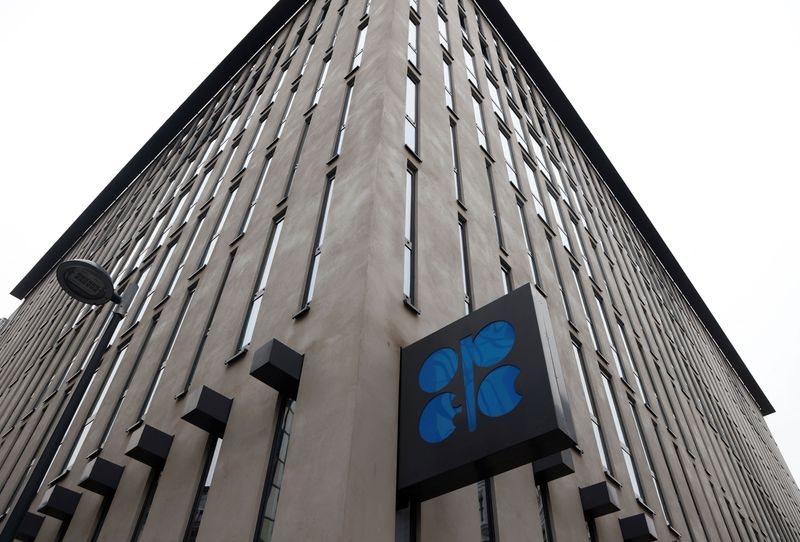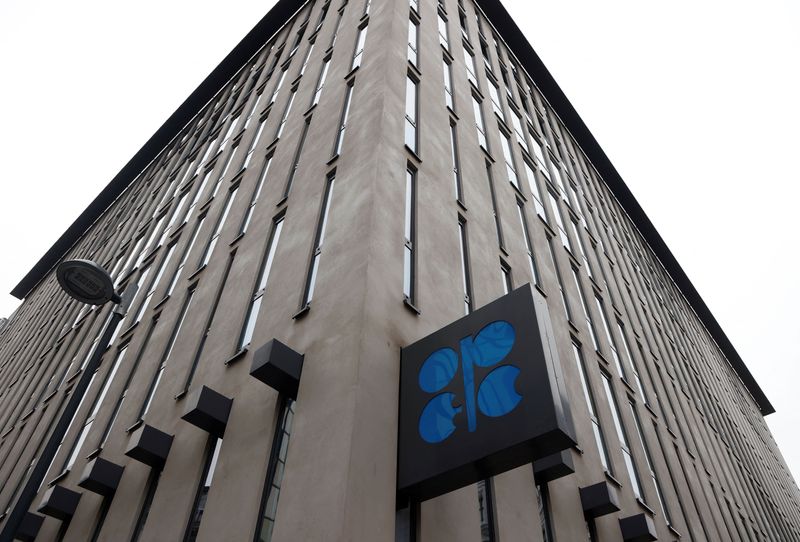Commodities
Explainer-What new OPEC+ oil output cuts are in place after Thursday deal


© Reuters. FILE PHOTO: A view of the logo of the Organization of the Petroleum Exporting Countries (OPEC) outside their headquarters in Vienna, Austria, November 30, 2023. REUTERS/Leonhard Foeger/File Photo
By Alex Lawler
LONDON (Reuters) – OPEC+ oil producers on Thursday agreed to voluntary output cuts totalling about 2.2 million barrels per day (bpd) for the first quarter of 2024 led by Saudi Arabia rolling over its current voluntary cut.
Included in this figure is an extension of existing Saudi and Russian voluntary cuts of 1.3 million bpd, meaning the new element of the cut is about 900,000 bpd. The new cuts come on top of earlier curbs announced in various steps since late 2022.
OPEC+ negotiations over production quotas have often been difficult in the past, most recently at their June meeting.
WHAT CUTS WERE IN PLACE BEFORE THURSDAY?
OPEC+ in June extended oil output cuts of 3.66 million barrels per day (bpd), or about 5% of daily global demand, until the end of 2024.
In addition, Saudi Arabia since July has been making a 1 million-bpd voluntary reduction in output lasting until the end of December 2023. A Russian cut in oil exports of 300,000 bpd also lasts until the end of 2023.
HOW DOES THE NEW DEAL AFFECT OUTPUT TARGETS?
The latest round of cuts was announced by the individual countries on Thursday at the end of their online meeting.
OPEC+ issued a statement summarising the voluntary cuts as amounting to 2.2 million bpd and said they come on top of earlier ones announced in April 2023.
OPEC+ also revised 2024 targets for Nigeria, Angola and Congo after reviews by outside analysts. Angola has protested to OPEC about its lower 2024 quota which it says is too low.
The following table shows OPEC+ pledged cuts and production targets for the first quarter of 2024 in millions of barrels per day, based on information from OPEC, individual nations and Reuters calculations.
Country Q1 2024 Implied Q1 Output Actual
voluntary cuts 2024 targets** target after output (Oct
pledged Q1 2024 2023)*
Algeria 0.051 0.908 0.959 0.96
Angola 0.000 1.100 1.100 1.15
Congo 0.000 0.277 0.277 0.26
Equatorial 0.000 0.070 0.070 0.06
Guinea
Gabon 0.000 0.169 0.169 0.22
Iraq 0.220 4.009 4.22 4.38
Kuwait 0.135 2.413 2.548 2.57
Nigeria 0.000 1.500 1.500 1.35
Saudi Arabia 1.000 9.000 9.978 9.01
UAE 0.163 2.912 3.075 3.25
Azerbaijan 0.000 0.551 0.551 0.49
Kazakhstan 0.082 1.468 1.55 1.63
Mexico 0.000 1.753 1.753 1.67
Oman 0.042 0.759 0.801 0.8
Russia*** 0.500 8.949 9.449 9.53
Bahrain**** 0 0.196 0.196 0.85
Brunei 0 0.083 0.083
Malaysia 0 0.401 0.401
South Sudan 0 0.124 0.124
Sudan 0 0.064 0.064
Total OPEC-10 1.569 22.358 23.896 23.21
Total Non-OPEC 0.624 14.348 14.972 14.98
Total OPEC+ 2.19 36.706 38.868 38.19
* IEA figures
** Angola, Congo and Nigeria targets taken from OPEC statement putting their achievable production at this level
*** Russia is cutting its oil and product exports by 300,000 bpd until the end of 2023 and promised to deepen the cuts to 500,000 bpd of oil and oil product exports in the first quarter 2024.
**** Figure is total for Bahrain, Brunei, Malaysia, Sudan and South Sudan
Commodities
Oil prices rise; U.S. crude inventories plunge, Russia-Ukraine truce eyed
Commodities
India’s Reliance to stop buying Venezuelan oil over US tariffs, sources say
Commodities
Oil prices climb on Venezuela supply worries

 Forex3 years ago
Forex3 years agoForex Today: the dollar is gaining strength amid gloomy sentiment at the start of the Fed’s week

 Forex3 years ago
Forex3 years agoUnbiased review of Pocket Option broker

 Forex3 years ago
Forex3 years agoDollar to pound sterling exchange rate today: Pound plummeted to its lowest since 1985

 Forex3 years ago
Forex3 years agoHow is the Australian dollar doing today?

 Cryptocurrency3 years ago
Cryptocurrency3 years agoWhat happened in the crypto market – current events today

 World3 years ago
World3 years agoWhy are modern video games an art form?

 Commodities3 years ago
Commodities3 years agoCopper continues to fall in price on expectations of lower demand in China

 Economy3 years ago
Economy3 years agoCrude oil tankers double in price due to EU anti-Russian sanctions



























